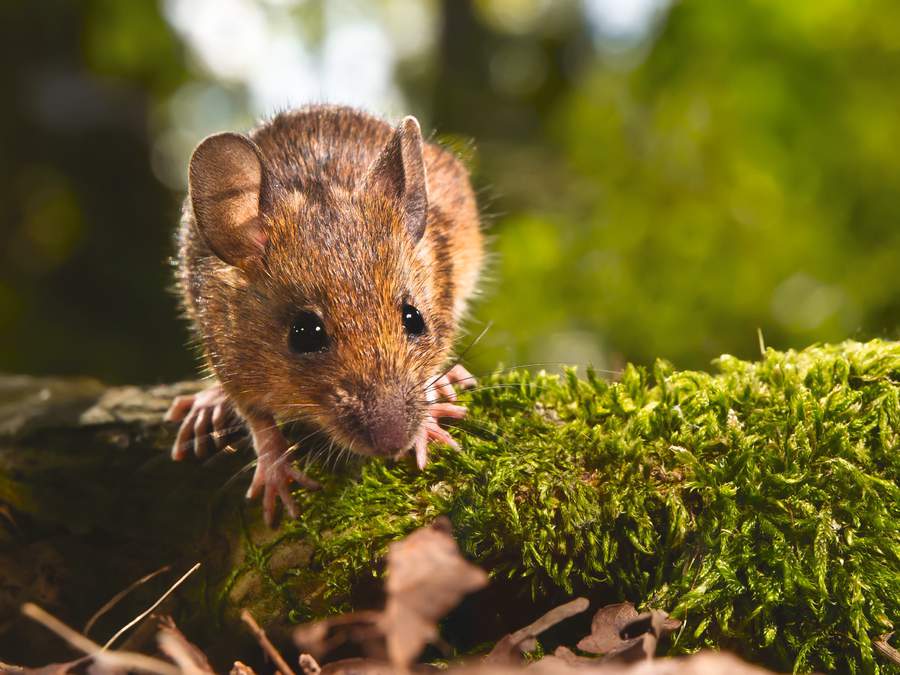5 Animals you never knew could sing

We hear beautiful birdsong on a daily basis, but birds aren’t the only animals to have musical talents. The following creative creatures might just surprise you
1. Whalesong is still a complete mystery

Decades of research have failed to uncover the secrets of the majestic humpback’s singing, and the information that scientists collect doesn’t necessarily apply to every humpback. Like humans, whales show evidence of culture and behave differently at various stages of life. Singing is exclusively a male whale activity and usually, it can only be heard during mating season, which occurs between October and February. During this period the whales drift through tropical water and don’t eat, focusing solely on mating. Males emit their low-pitched calls – which travel hundreds of miles – possibly to entice a female, but nobody knows for sure. If a singing male happens upon another male, he ceases his transmission immediately. If he encounters a female with a calf, he increases the duration and complexity of his call. This suggests that the male is looking out for a fertile female. However, researchers in Iceland have recorded juvenile males crafting songs throughout the winter. Adult whales migrate from the poles to the equator each year to participate in breeding, before returning back to cold water to feed. As young humpbacks are unable to mate it really isn’t worth swimming all the way to the equator, so instead they spend their time practising love ballads ready for when they hit maturity.
2. Chanting frogs are accidental movie stars

Everybody knows that frogs say “ribbit, ribbit”. Right? Wrong. The species that has inadvertently fooled the world can be heard in the background of countless Hollywood films. It is native to the west coast of North America, though it has been heard croaking way out of its natural range in films such as The Hunger Games, Labyrinth and The Lion King. The pacific tree frog choruses nightly for up to five months, advertising itself to mates by the edge of fresh water. The more frequently a frog chirps the more likely it is to attract a female, and the amphibians even extend vocal pouches from the lower jaw to amplify the sound. This results in a single frog sounding like a miniature croaking choir.
3. Some fish can sing without vocal chords

Many fish species have a gas-filled swim bladder to help control their buoyancy when swimming at depth. Toadfish manipulate the muscles around this sac to produce booming tones that entice female fish to their patch of the seabed.These fish build rudimentary nests using rocks, which serve as the male’s base. From here, a toadfish can drone on for two hours at a time in the hope that a female will approach and deposit hundreds of her eggs into his nest. Small males can’t keep up with the musical stylings of their rivals and so adopt a different strategy for fathering offspring. Known as ‘sneaker males’, these animals creep from nest to nest during the performance of the dominant fish to fertilise an egg or two. While it seems very unfair that some of these fish are doomed to be mute, it’s worth noting that these sneaker males have reproductive organs approximately 15-times larger than the big, singing toadfish.
4. Nature’s rap artists spit verse at lightning speed

Bats are true masters of sound with their incredible echolocation abilities, but this species possesses an even more impressive skill. As with many singing species, males produce melodious sonic sequences to lure in a harem of females. A male pipes up whenever another bat giving out an echolocation call passes by, hoping to slow down any loved-up ladies. It takes less than a second for a male to respond to a passing female’s chirps, and it’s important that the singing starts immediately because within just a few seconds the pair won’t be able to hear one another. Amazingly, males can distinguish between female echolocation sounds and another male’s song in 0.2 seconds. The two tones are identical in parts and even bat experts have difficulty telling them apart. It’s great for the bats, though, who are able to sing only to those they feel truly deserve to hear it.
5. Male mice croon for females

Energy is a vital resource in the animal kingdom, and mice have figured out that chirping out a tune is much easier than chasing tail. If the male gets a sniff of female urine he begins to belt out a loud and complex tune, not dissimilar to a trilling bird. Finding a fresh urine patch provokes the mouse to sing in its highest pitch and increase the duration of the song. When a female approaches the melody becomes more simple but goes on for longer. This is called social context, where the song changes depending on other mice, and researchers think that males do the bare minimum once they have a female’s attention. The tuneful song is known as an ‘honest signal’ that conveys information about the male’s health and status as a potential mate. The sounds of singing mice are almost indistinguishable from twittering birds aside from one aspect – we can hear birdsong. Mice vocalisations are ultrasonic, meaning they are above our hearing threshold, and recordings can only be made audible by being slowed down. These high-pitched sounds are familiar to mice from birth and are used in social interactions from mother-pup retrieval to expressions of pain. Their use of inmate attraction is a recent discovery, however, and researchers are still looking into how the animals adjust their behaviour depending on neighbouring mice. One thing that we already know is that mice have limited vocal ability, as the brain structure doesn’t lend itself well to vocal learning.
This article was originally published in World of Animals issue 49, written by Amy Grisdale
For more science and technology articles, pick up the latest copy of How It Works from all good retailers or from our website now. If you have a tablet or smartphone, you can also download the digital version onto your iOS or Android device. To make sure you never miss an issue of How It Works magazine, subscribe today!





